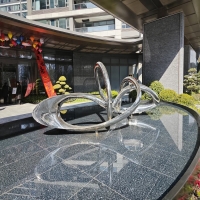Welcome to the website for landscape facilities products and knowledge.
How does the design of the trash can impact the ease of attaching recycling labels?
The design of a trash can plays a crucial role in determining how easily recycling labels can be attached and maintained. A well-thought-out design incorporates flat, smooth surfaces or dedicated label areas, making it simple to affix and read recycling instructions. For instance, bins with curved or textured surfaces may hinder label adhesion, causing them to peel off or become illegible over time.
Additionally, the material of the trash can affects label durability. Plastic or metal bins with non-porous surfaces are ideal for adhesive labels, while rough or porous materials like unfinished wood may require alternative labeling methods, such as engraved or painted markings.
Color contrast is another factor. Light-colored bins with dark labels (or vice versa) improve visibility, ensuring users quickly identify recycling categories. Some modern designs even include built-in label holders or magnetic panels for easy updates, catering to evolving recycling guidelines.
Ultimately, a trash can designed with labeling in mind promotes better waste segregation, reduces contamination, and supports environmental sustainability. By prioritizing functionality and aesthetics, manufacturers can create bins that seamlessly integrate into homes, offices, and public spaces while encouraging proper recycling habits.
Related search:

Recommendation
Abstract art sculpture, stainless steel metal sculpture, large-scale water feature sculpture